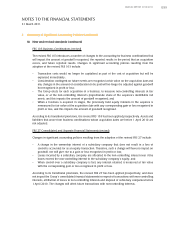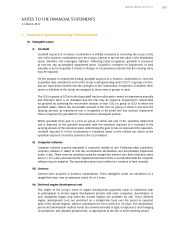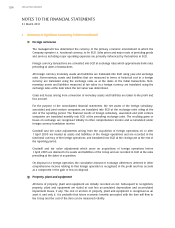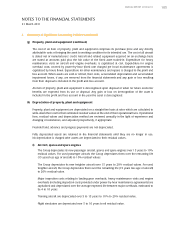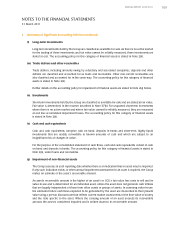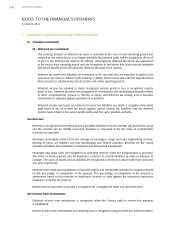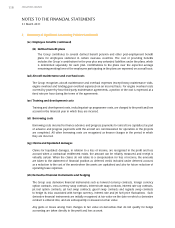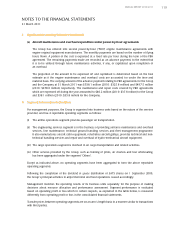Singapore Airlines 2011 Annual Report Download - page 111
Download and view the complete annual report
Please find page 111 of the 2011 Singapore Airlines annual report below. You can navigate through the pages in the report by either clicking on the pages listed below, or by using the keyword search tool below to find specific information within the annual report.ANNUAL REPORT 2010/2011 109
NOTES TO THE FINANCIAL STATEMENTS
31 March 2011
2 Summary of Significant Accounting Policies (continued)
(l) Long-term investments
Long-term investments held by the Group are classified as available-for-sale. As there is no active market
for the trading of these investments and fair value cannot be reliably measured, these investments are
stated at cost. The accounting policy for this category of financial assets is stated in Note 2(k).
(m) Trade debtors and other receivables
Trade debtors, including amounts owing by subsidiary and associated companies, deposits and other
debtors are classified and accounted for as loans and receivables. Other non-current receivables are
also classified and accounted for in the same way. The accounting policy for this category of financial
assets is stated in Note 2(k).
Further details on the accounting policy for impairment of financial assets are stated in Note 2(q) below.
(n) Investments
Short-term investments held by the Group are classified as available-for-sale and are stated at fair value.
Fair value is determined in the manner described in Note 37(b). For unquoted short-term investments
where there is no active market and where fair value cannot be reliably measured, they are measured
at cost less accumulated impairment losses. The accounting policy for this category of financial assets
is stated in Note 2(k).
(o) Cash and cash equivalents
Cash and cash equivalents comprise cash on hand, deposits in banks and short-term, highly liquid
investments that are readily convertible to known amounts of cash and which are subject to an
insignificant risk of changes in value.
For the purpose of the consolidated statement of cash flows, cash and cash equivalents consist of cash
on hand and deposits in banks. The accounting policy for this category of financial assets is stated in
Note 2(k), under loans and receivables.
(p) Impairment of non-financial assets
The Group assesses at each reporting date whether there is an indication that an asset may be impaired.
If any such indication exists, or when annual impairment assessment for an asset is required, the Group
makes an estimate of the asset’s recoverable amount.
An asset’s recoverable amount is the higher of an asset’s or CGU’s fair value less costs to sell and its
value-in-use and is determined for an individual asset, unless the asset does not generate cash inflows
that are largely independent of those from other assets or groups of assets. In assessing value-in-use,
the estimated future cash flows expected to be generated by the asset are discounted to their present
value using a pre-tax discount rate that reflects current market assessments of the time value of money
and the risks specific to the asset. Where the carrying amount of an asset exceeds its recoverable
amount, the asset is considered impaired and is written down to its recoverable amount.


